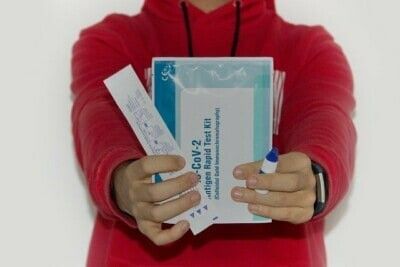Corona self-test: an overview
In the run-up there were many heated discussions about it, but now the Corona self-test for home in different variants, is officially allowed.
This means that the tests may now be sold to private individuals and carried out by them on their own initiative. Until now, the Corona test has been performed only by trained personnel.
The three tests that have now been approved for use by laypersons under a special approval are those that involve taking a swab from the front of the nose.
In addition, however, there are several other testing methods that are currently being researched and reviewed for their approvability.
What those who want to buy a Corona test need to know about the new rapid tests and how the different types of tests work is explained in the following article.
Corona self-test – The different types
As with a professional Corona test, the aim of home self-tests is to detect the presence of the appropriate viral material in the test person.
When approving the Corona self-test, it was important to ensure that the sample is taken safely and easily and that the result is clearly recognizable even for untrained personnel. The already established rapid antigen tests fulfill similar criteria.
The function of the tests can be compared to that of a conventional pregnancy test. After the respective sample has been taken, it is mixed with special solvents and placed in a small box.
The result can then be read within a few minutes. Currently, the following three types of rapid tests can be used:
- Suck or spit test,
- Gargle Test,
- Swab or stick test.
The tests that have so far been approved for use at home have in common that the swab comes from the anterior nasal region.
Today, however, it is not yet clear which collection methods and self-tests will be approved for home use in the future, and which will be.
How the Corona rapid tests work
Swab or stick test
As part of the swab or stick test, the mucosa of the throat is swabbed with an extended cotton swab to pick up any components of the virus.
Thus, it is usually not sufficient to simply touch the oral mucosa briefly at any point. Ideally, the wall of the throat should be reached, which is located behind the uvula.
However, many people struggle with the gag reflex at this point. Also, some coordinative skill is needed to perform such a smear independently.
Nasal swab
For the nasal swab test, it is necessary to pass the cotton swab through the nose against the back wall of the pharynx. Although this is not necessarily pleasant, it can certainly be done on one’s own.
Gargle test
The gargle test involves gargling with a special non-toxic liquid – usually a saline solution – for a certain period of time.
The gargle fluid is then examined for any virus components that may be present.
Research for further test variants
Currently, some companies are also researching tests that are less uncomfortable than a swab, but still provide reliable results.
For some tests, this allows the patient to spit into a small tube, while for others, a swab is simply swabbed across the mucous membranes in the front of the mouth.
There is also a so-called lolly test, in which the test person only has to suck on the stick.
Currently, it is not clear which self-tests for home use will be approved in the future besides the nasal swab test.
